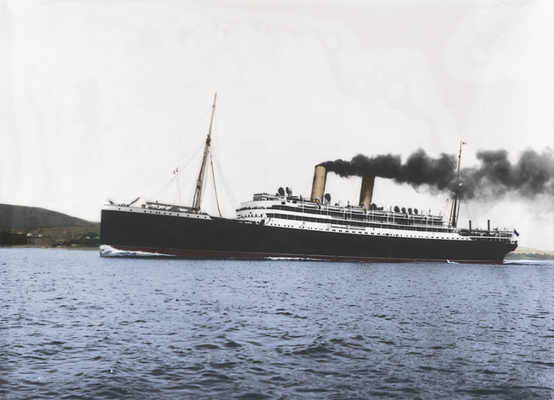About
Many are familiar with the tragedy of the RMS Titanic, but fewer are familiar with the story of the RMS Empress of Ireland. Just two years after the White Star liner sank into the North Atlantic, another passenger ship plunged into icy waters, claiming the lives of 1,012 people—eight more passengers than were lost on Titanic.
On May 28, 1914, the Canadian Pacific steamship the RMS Empress of Ireland set sail from Quebec City, Canada along the St. Lawrence River en route to Liverpool. The ship wasn't as grand or luxurious as the Titanic, but it had provided safe and reliable passage between Canada and the United Kingdom since it launched in 1906. The particular passage hosted nearly 200 Salvation Army members and their families from Canada, who were en route to the third International Salvation Army Congress in London.
Early in the morning of May 29, 1914, the ship's captain and crew were made aware of a Norwegian collier, or coal ship, called Storstad along their route. Captain Henry Kendall evaluated the situation and maintained a course that he thought would give the smaller ship ample room to cross their path.
Dense fog commonly occurred that time of year, as warming spring air met the still-cold waters. This fog suddenly enveloped the ship, and sight became impossible.
Exactly what happened next has been the subject of conflicting accounts, but the result was a direct collision. The Storstad tore through the starboard side of the Empress of Ireland, carving an enormous gash well under the waterline, which measured at least 14 feet and 25 feet deep. After the Titanic disaster, the Empress of Ireland and other liners like it were fitted with enough lifeboats to accommodate all passengers and crew onboard. However, the damage that the Empress of Ireland sustained was so severe that neither safety measures nor the lifeboats could be deployed in time.
Less than 15 minutes after the collision, the Empress of Ireland had sunk 40 meters (130 feet) to the bottom of the unforgiving St. Lawerence River. The night claimed the lives of 1,012 passengers and crew of the 1,477 on board. Of the 192 members of the Salvation Army group who traveled on the ship, 167 didn't survive.
As victims and their families reeled from this tragedy, memorials took place and lives were celebrated in the U.K. and Canada. In Toronto, where many of the Salvation Army members were from as well as 24 other passengers, a massive funeral and memorial was held. Initially, only 16 bodies of the victims from Toronto were recovered, and they were interred in the Salvation Army plot at Toronto's Mount Pleasant Cemetery. Eventually, a total of 22 victims would be recovered and interred in the plot. Two years after the tragedy, a monument designed by Salvation Army Major Gideon Miller and sculpted by Emanuel Hahn was unveiled at the plot. Every year since the disaster, the Salvation Army holds a special service of remembrance each May.
Related Tags
Know Before You Go
The memorial and burial site is located within Toronto's historic Mount Pleasant Cemetery. It can be found at Plot R in Lot 21.
Community Contributors
Added By
Published
March 27, 2024






















